-
 +27 +1
+27 +1A company is reviving efforts to make a bionic eye brain implant for the blind
The prosthesis could help more people who have lost their vision than a device already on the market.
-
 +19 +1
+19 +1Newly Developed 'Bionic Skin' Enables the Sense of Touch in Robots
A new process for printing stretchable electronic sensory devices in 3D has been developed by engineering researchers at the University of Minnesota. This development could enable robots to feel their environment. The discovery has also been hailed as a major step forward in printing electronics on real human skin.
-
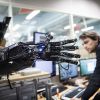 +41 +1
+41 +1Could we soon 'upgrade' our bodies? Extreme bionics will create modular superhumans
MIT's Center for Extreme Bionics it trying to eliminate human disabilities and push us beyond the limits of our own bodies. From peg legs through hook hands and iron fists, for millennia prosthetics were a very poor substitute for our basic biology. No-one would have voluntarily chosen a prosthetic. But, over the past few decades, prosthetics have been improving in functionality. External appendages became internal implants such as artificial hips and knees.
-
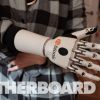 +31 +1
+31 +1What It’s Like to Live With a Bionic Hand
Nicky Ashwell was born without her right hand, but that’s never held her back. By Victoria Turk. (Oct. 25, 2016)
-
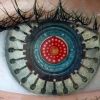 +36 +1
+36 +1Bionic Eyes Are Coming, and They'll Make Us Superhuman
Bionic eyes are already in development and could alleviate sight issues for hundreds of millions suffering from visual impairments or blindness. The mechanical eyes could also provide enhanced sight so cybernetic humans could see more of the electromagnetic spectrum.
-
 +34 +1
+34 +1Bionic eye will send images direct to the brain to restore sight
In future you may not even need eyes to see. Next year, a blind person in Australia will be the first to receive “bionic eyes” that bypass most of the visual system entirely. Instead, a camera mounted on a pair of glasses will feed information about the world directly to the brain. The breakthrough should help restore vision in people without a working retina. “You don’t need an eyeball at all,” says Arthur Lowery at Monash University in Clayton, Victoria, who is developing the bionic eye.
-
 +31 +1
+31 +1New "Bionic" Leaf Is Roughly 10 Times More Efficient Than Natural Photosynthesis
A tree's leaf, a blade of grass, a single algal cell: all make fuel from the simple combination of water, sunlight and carbon dioxide through photosynthesis. Now scientists say they have replicated—and improved on—that trick with their own “bionic leaf.” Chemist Daniel Nocera of Harvard University and his team joined forces with synthetic biologist Pamela Silver of Harvard Medical School and her team to craft a kind of living battery, which they call a bionic leaf for its melding of biology and technology.
-
 +24 +1
+24 +1Artificial muscle for soft robotics: Low voltage, high hopes
Soft robots do a lot of things well but they're not exactly known for their speed. The artificial muscles that move soft robots, called actuators, tend to rely on hydraulics or pneumatics, which are slow to respond and difficult to store.
-
 +32 +1
+32 +1This 25-year-old lived for more than a year without a heart
A 25-year-old has just received a full heart transplant... but not before surviving for more than a year without a human heart inside his body. Instead, Stan Larkin wore an 'artificial heart' in a backpack 24/7 for 555 days, which pumped blood around his body and kept him alive. The success of the procedure suggests that the device could be used to sustain other patients with total heart failure while they're waiting for a donor.
-
 +19 +1
+19 +1Scientists Have Found A Way To Turn Sunlight Into Liquid Fuel
Scientists at Harvard University have found a way to create liquid fuels using nothing but sunlight. Professor Daniel Nocera and his team have created a “bionic leaf” which uses the sun’s energy to split water molecules and hydrogen-eating bacteria to produce liquid fuels. “This is a true artificial photosynthesis system,” Nocera explains. “Before, people were using artificial photosynthesis for water-splitting, but this is a true A-to-Z system, and we’ve gone well over the efficiency of photosynthesis in nature.”
-
 +28 +1
+28 +1Bionic eye restores man’s vision after being blind for 40 years
John Jameson might not have believed in miracles a year ago, but breakthroughs in modern science have made certain that he does now. The Tatum, Texas man had been blind for more than 40 years after…
-
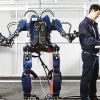 +34 +1
+34 +1Hyundai's new wearable robot turns you into a mech pilot
South Korean automaker Hyundai has unveiled what is apparently a new robotic exoskeleton. In a blog post the company compares its "wearable robot" prototype to an Iron Man suit, saying it gives the wearer extra strength, allowing them to lift objects "hundreds of kilograms" in weight. The company says that in the future the exoskeleton could be used in factories, by the military, or to help with physical rehabilitation.
-
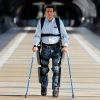 0 +1
0 +1Review Board Rules Health Insurance Must Cover Robotic Exoskeletons
A medical review board ruled that a health insurance provider in the United States is obligated to provide coverage and reimbursement for a $69,500 ReWalk robotic exoskeleton, in what could be a major turning point for people with spinal cord injuries. A press release from ReWalk says the health insurance provider is from the Northwestern US, but does not provide any other information on the company. The unnamed health plan initially denied coverage...
-
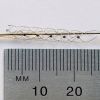 +29 +1
+29 +1‘Bionic spine’ could enable paralysed patients to walk using subconscious thought
Australian scientists hope that a tiny device just 3cm long and a few millimetres wide will enable paralysed patients to walk again by allowing them to control bionic limbs with the power of subconscious thought. The new device, dubbed the “bionic spine”, is the size of a small paperclip and will be implanted in three patients at the Royal Melbourne hospital in Victoria next year. The participants will be selected from the Austin Health spinal cord unit...
-
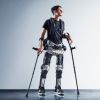 +33 +1
+33 +1This $40,000 Robotic Exoskeleton Lets the Paralyzed Walk
Paralyzed from the waist down after a BMX accident, Steven Sanchez rolled into SuitX’s Berkeley, California, office in a wheelchair. A half-hour later he was standing and walking thanks to the Phoenix—a robotic exoskeleton now available for around $40,000. The suit returns movement to wearers’ hips and knees with small motors attached to standard orthotics. Wearers can control the movement of each leg and walk at up to...
-
 +43 +1
+43 +1We Test Drove A Bionic Exoskeleton That Will Make You Rethink Aging
R70i looks like the blue, robotic love child of C-3PO and Iron Man. Glowing lights line the bionic exoskeleton’s joints, which bend only at odd angles, and a chest plate gives the entire outfit a Superman vibe. But far from bestowing its wearers with superpowers, this bionic exoskeleton mimics the aging process, to help raise awareness and empathy for the elderly. When I strapped into Genworth’s R70i Aging Experience at CES 2016, an enormous consumer technology conference in Las Vegas...
-
 +38 +1
+38 +1Bionic eye could restore sight and give hope to thousands of blind people
A bionic eye could restore sight to some blind people. Scientists have developed an implant, which delivers long pulses of electrical current in people blinded by a rare condition in which photoreceptor cells gradually cease to work. It brings hope to the 20,000 Britons with incurable retinitis pigmentosa (RP) after a study showed the device improves image sharpness. RP is a rare hereditary condition that causes gradual deterioration of the...
-
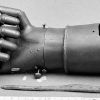 +29 +1
+29 +1Object of Intrigue: the Prosthetic Iron Hand of a 16th-Century Knight
-
 +20 +1
+20 +1Inside the 50-year-quest to build a mechanical heart
Steve Williams couldn’t breathe. The former athlete had cardiomyopathy, which occasionally choked his lungs with fluid, making him gasp for air. But this felt different; Williams felt like he was dying. He was raced to an Orange County hospital, and shortly after checking in, his heart stopped. For 30 minutes, ER workers compressed his chest in an attempt to revive him. At one point, his wife Mary remembers being called into his room to say goodbye to...
-
 +28 +1
+28 +1Breaking The Barrier Of Humans And Machines
My kitchen opens up to my family room, where right smack in the middle sits Alexa, an Amazon Echo device. It feels strange to call Alexa a device, because she has been chatting with my family and is building out her personality. Tell Alexa, “You are stupid,” and she’ll reply, “I’ll try to do better next time,” and “That’s not very nice to say,” the second time. As Amazon applies machine learning, Alexa will learn and develop her personality to fit in my home differently from yours.
Submit a link
Start a discussion




















